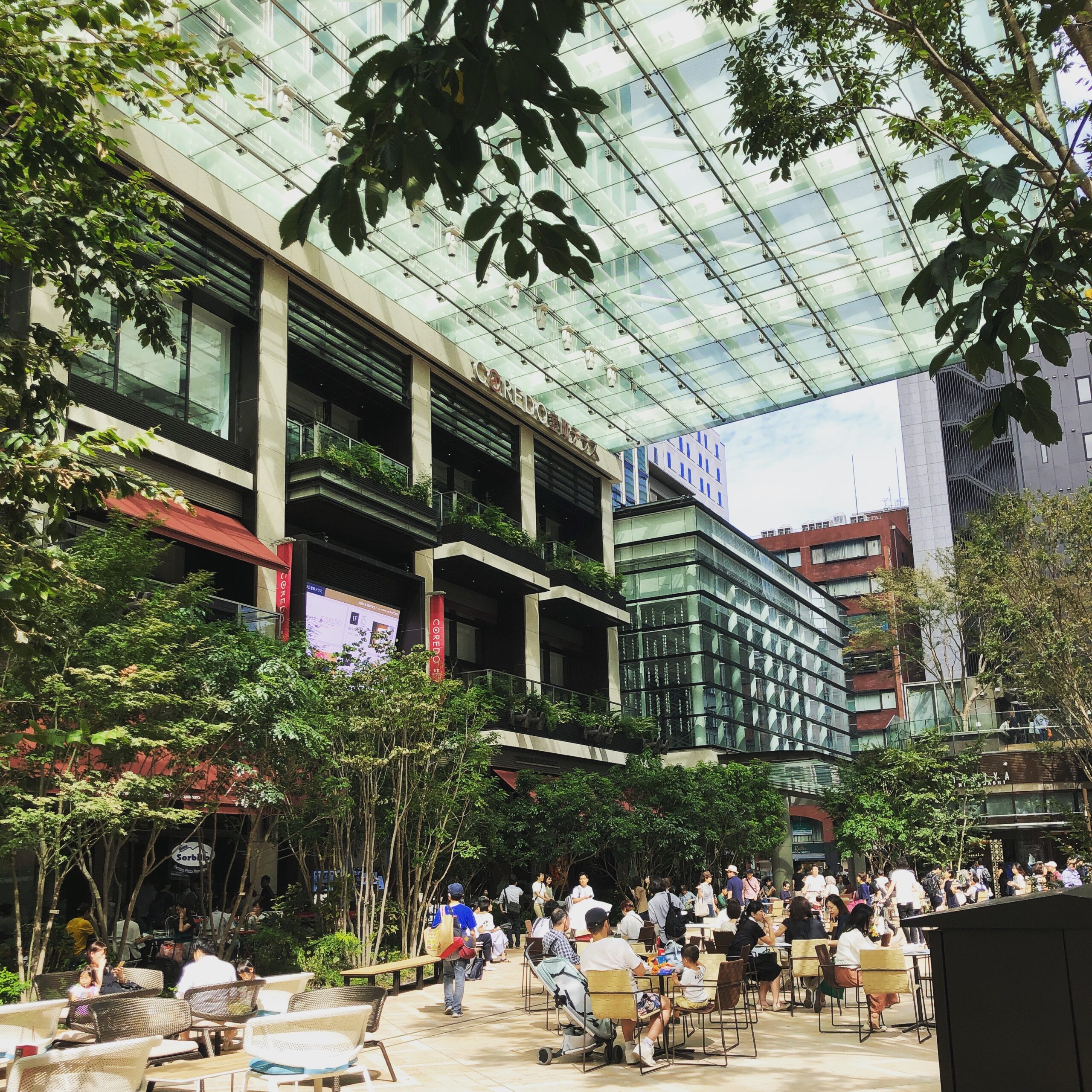Nihonbashi used to be a starting point of travel routes. During Edo period when Shogun ruled Japan, there were several routes which people used for traveling and transporting goods. And the origin of these routes was Nihonbashi.
Tokaido Way is one of those traveling routes. It is the longest route and connects Tokyo and Osaka. There are 53 post stations along the Way and Ukiyo-e painter Utagawa Hiroshige drew one ukiyo-e painting for each of the 53 post stations.
Speaking of ukiyo-e, last time, I made a Ukiyo-e Tour to Kameido Tenjin Shrine. So why don’t we try another Ukiyo-e Tour, this time to Nihonbashi?
1. Starting Point of Tokaido 53 Post Stations
As I mentioned above, this town is a starting point of Tokaido Route. The word “Nihonbashi” can be devided into two words of “Nihon” and “bash” “Nihon” means Japan and “bashi” means bridge. Let’s look at the Ukiyo-e of the town. Now you know why you see a bridge here. This bridge was built in 1603 by the order of Shogun Tokugawa Ieyasu.
Digital publisher: National Diet Library Digital Collection
Today’s bridge is an elaborate-looking brick-built bridge. Unfortunately it is under the Metropolitan High Way. It would be much better if I can see the wide sky from this bridge.

2. Nihonbashi during Edo Period
Nihonbashi used to be merchants’ town. Even today, there are many old shops and stores which started business several hundred years ago. Many Ukiyo-e shows the lively atmosphere of the town in old days.
For example, Katsushika Hokusai made woodblock prints of this town. This is one of the famous 36 sceneries of Mt. Fuji.
Nihonbashi Bridge is drawn in front of this picture. Many people are on the bridge carrying many commercial products and daily goods. The river is Nihonbashi-gawa River which does not exist today. The castle far away is Edo Castle. This is where Emperor lives today. And in the far end, you can see Mt. Fuji.
Here is another Ukiyo-e of this area by Utagawa Hiroshige.

Both Samurai and merchants are walking on the bridge. People carry many kinds of goods. One merchant have two large fish. The big barrel that two people carry on the right side must be sake.
3. Old Shops and New Shops
Since this has been merchants’ town for centuries, there are many old shops from bonito shops, sea weed shops to knives shops and paper stores. It is enjoyable to walk along the streets and pop into those shops.
One of my favourite shops is Ozu Washi, a traditional paper store, or a kind of stationary. They have so many beautiful Japanese papers. Since the store has a long history, they exhibit their story.
Another interesting and old shop is “Ibasen“. This shop has been selling Japanese traditional fans for over four hundred years. They have fans with a variety of Ukiyo-e.

But the fascinating part of this town is that it keeps evolving over the centuries. So new-comers also help the town has lively atmosphere. For example, COREDO Muromachi Terrace is a shopping complex in Nihonbashi area opened in September, 2019.
COREDO Muromachi Terrace has a Taiwanese bookshop called Eslite Japan. They sell some English books but not only that. They also sell a variety of goods from stationery to souvenirs. Therefore it is quite fun walking around the store. And you can have a cup of tea if you get tired as there are two cafes inside the bookshop. If you want to know more, take a look at their Instagram.
4. More Info on Nihonbashi
Exact place of the Bridge:
From Nihonbashi 1-chome to Nihonbashi Muromachi 1-chome, Chuo-ku, Tokyo
Access:
A one-minute walk from Mitsukoshimae Station of Tokyo Metro Ginza Line or Hanzomon Line
Ozu Washi:
6-2, Nihonbashihoncho 3-Chome, Chuo-ku, Tokyo
Ibasen:
4-1 Nihonbashikobunacho, Chuo-ku, Tokyo
COREDO Muromachi Terrace:
2-1, Nihonbashimuromachi 3 Chome-, Chuo-ku, Tokyo






